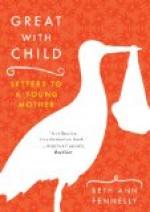If mothers ask, of what use this motion of the lungs is, it is only necessary to refer them to the chapter on Ventilation, in which I trust the subject is made intelligible, and a satisfactory answer afforded.
But I might appeal to facts. Let us look at females around us generally. Do their countenances indicate that they enjoy as good health as they did when dress was worn more loosely? Have they not oftener a leaden hue, as if the blood in them was darker? Are they not oftener short-breathed than formerly? As they advance in life, have they not more chronic diseases? Are not their chests smaller and weaker? And as the doctrine that if one member suffers, all the other members suffer with it, is not less true in physiology than in morals, do we not find other organs besides the lungs weakened? Surgeons and physicians, who, like faithful sentinels, have watched at their post half a century, tell us, moreover, that if these foolish and injurious practices to which I refer are tolerated two centuries longer, every female will be deformed, and the whole race greatly degenerated, physically and morally.
Those with whom no arguments will avail, are recommended to read the following remarks from the first volume of the Library of Health, p. 119:
“It is related, on the authority of Macgill, that in Tunis, after a girl is engaged, or betrothed, she is then fattened. For this purpose, she is cooped up in a small room, and shackles of gold and silver are placed upon her ancles and wrists, as a piece of dress. If she is to be married to a man who has discharged, despatched, or lost a former wife, the shackles which the former wife wore are put on the new bride’s limbs, and she is fed till they are filled up to a proper thickness. The food used for this custom worthy of the barbarians is called drough, which is of an extraordinary fattening quality, and also famous for rendering the milk of the nurse rich and abundant. With this and their national dish, cuscasoo, the bride is literally crammed, and many actually die under the spoon.”
We laugh at all this, and well we may; but there are customs not very far from home, no less ridiculous.
“There is a country four or five thousand miles westward of Tunis, where the females, to a very great extent, are emaciated for marriage, instead being fattened. This process is begun, in part, by shackles—not of gold and silver, perhaps, but of wood—but instead of being put on loosely, and causing the body or limbs to fill them, they are made to compress the body in the outset; and as the size of the latter diminishes, the shackles are contracted or tightened. As with the eastern, so with the western females, many of them die under the process; though a far greater number die at a remote period, as the consequence of it.”
SEC. 3. Material.
I have already committed myself to the reader as favoring the use of soft flannel in cold weather, especially for children who are not yet able to run about freely in the open air. The advantages of an early use of this material, at least for under-clothes, are numerous. The following are a few of them.




